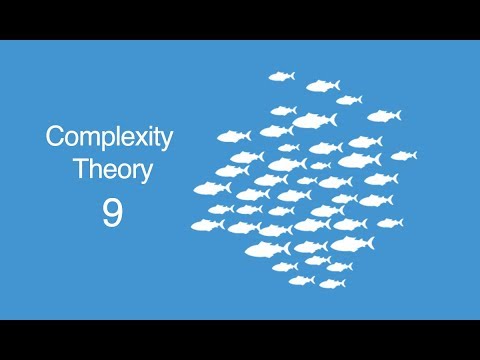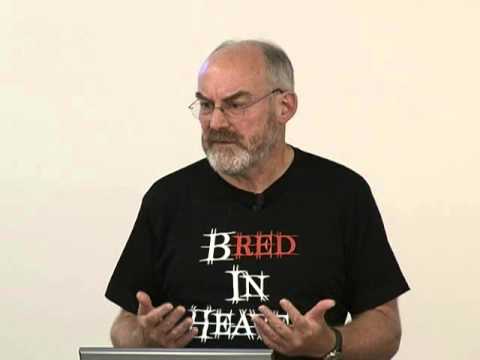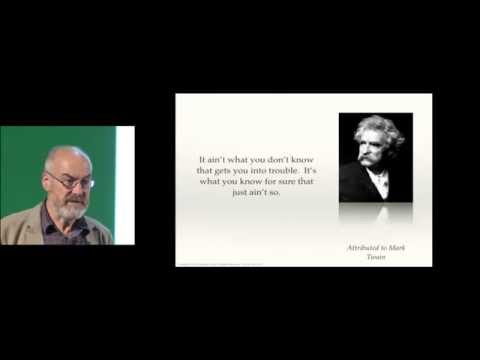I don’t find that statement reassuring in the least. I think we need a much better idea implementation strategy than just “putting the idea onto a blog or forum and see what happens”. If we want to bring ideas to fruition we need to attract the people that can make things happen. Meaning, we need to attract entrepreneurs and people who want to become entrepreneurs. Or at least talk with such people. Do you know of any good online platform for that?
I don’t have any problem with idea diffusion. Enough people follow my blog posts.
If you’re having a problem finding people receptive to your ideas you have to leave the forum and go to communities of people who are thinking about what you’re thinking about. Example: http://cyber.fund/
Good that you mention visiting communities of interested people. This is a crucial part of any solid strategy to disseminate and implement ideas.
The next logical step would be beginning of the implementation phase on an idea. Do you have any strategy for that, or do you rely on other people to take care of that part?
You’re still thinking about it wrong. This isn’t a top down engineering process. It’s an emergent process. You don’t direct the swarm. You present an idea which attracts the swarm to the concepts. What is the central concept?
If you want to know how this process works look at how Protoshares became Bitshares.
https://bitshares.org/blog/bitshares-airdrop-theory/
Sharedrops, stigmergy, emergent self organization, swarm intelligence. You don’t need to implement everything yourself. You do need to produce good ideas and properly drop them. Everyone who is in position to do implementing will become an implementer, everyone in a position to research and formulate ideas will do so, everyone who is in a position to do marketing will do that. Play your position.
Now for the science and mathematics.
- Create “stakeholders” in an idea by using the sharedrop to give shares in the idea itself.
- Stakeholder analysis can allow you to determine who to give future ideas to.
- A multi-stakeholder network is formed over time as certain people have a stake in many different ideas.
- The multi-stakeholder network if it is diverse enough and motivated enough by the shared vision for the future will become a “swarm” which will implement the best ideas they have a stake in.
- All of this is swarm behavior, and sharedrops create stigmergy.
It has been proven by the Protoshares to Bitshares experiment. Stigmergy has been seen in various communities already and has been shown to create swarm behavior in the participants. The area where you have to be precise is in where you sharedrop. You have to sharedrop to the people who have a similar vision for the future that you have with your idea.
So for this reason if you sharedrop to certain radical futurists you can be pretty sure they’d be interested in certain ideas like Life Extension or even a cure for aging. So if you have an idea which cures aging you would want to make the people who care the most about it into stakeholders. After that everyone shares a stake in the same outcome and a swarm emerges based on that.
Thanks for sharing these ideas and resources. This looks like a very promising basis for an overall framework on how to implement ideas. Let me try to put this together in a chronological order:
- Get some inspiration for an idea.
- Have an idea.
- Explain the idea somewhere.
- Identify potential stakeholders for the idea.
- Share the idea on the stakeholder networks that already exist. Use attractor patterns to frame the idea in an attractive way that helps to recruit people into supporters of the idea.
- Allow stigmergy to happen and take the idea to completion. Use sharedrops for that purpose.
Now, the last point probably needs to be subdivided into multiple points. i’m not really familiar with the sharedropping concept and wonder whether and how it can be applied outside of the creation of DACs and DApps. Ideally, we should discuss this in a separate topic (you can use the “+ Reply as linked Topic” feature that pops up to the top right of a post to do so).
Do you think this is a good simplified representation of the general process you have in mind, or do you think I’ve missed something?
The stigmergic operation is required. In the case of Protoshares it was the tokenization of the shared vision. They turned the shared vision into a token which could be purchased or mined. Next they created a social consensus around that shared vision.
I suggest you study step by step how Protoshares became Bitshares to learn how stigmergy works in a practical experiment. It was a huge success proven by Bitshares community which currently has developers who get paid by the DAC itself. People work directly for the DAC which is not all that different from bee hives or ant colonies.
What surprises me is that tokenisation happened before creating a social consensus. Somehow that feels intuitively backwards. What are the reasons for that to have happened? Is that necessarily the right/best order of events?
You have to create the attractor pattern first. People rally behind the idea if the idea is pretty good. The attractor pattern in most cases requires tokenization so that there can be a price. We tend to look at price instead of duration of a dance.
For example prior to Bitcoin having a price a lot fewer people were interested in it. Once it had a price on an exchange and everyone saw the price going up it was the attractor pattern which caught a lot of attention.
BitCOIN is the attractor token. Blockchain is the idea behind Bitcoin which could be the general attractor pattern. People who are really into technology are attracted to the blockchain but people who see Bitcoin as a currency are attracted to currencies because for most humans the currency is the attractor pattern universally recognized.
But you can use anything. You can use shares, you can use a mailing list, you can use citizenship or membership in a club.
I’m very frustrated by this insistence that there is no aspect of creating and promoting an attractor pattern that is within the traditional term ‘leadership’ .
There has to be some person or organization that takes action to create the seed and nurture it until it takes root.
I realize some of this is just terminology, but it comes across as ideological.
As far as I am concerned, both of you are ‘leaders’.
Not because you are trying to be, but because your enthusiasm and willingness to publicly document your ideas and thought processes has power for changing the great discussion.
Another word for “leader” is “target”. Resilient systems are adaptive. If you think in a manner which requires a certain word then perhaps you should check the manner of your thinking to make sure it would work no matter what words are used.
If you look at an organism, a complex adaptive system, can you tell me who or what is the leader?
The answer is that the software itself is the leader, the code, self organization.
Mark I suggest you study the work of Dave Snowden:
In specific learn about the Cynefin Framework and if you can understand that then you’ll understand why I take the approach I take. You simply cannot think about distributed systems in the same way that you think about centralized systems.
If you think I’m a leader then to someone else I’m a target. If I’m a target then I wont be in my role for long. Someone else will take the code, my blog posts, or other aspects, and will take over. That is stigmergy.

Leadership isn’t as important as the the information flow, recovery, storage, security etc. In a world where stigmergy functions as a way to help smart people find relevant information (such as what we have on the Internet), there isn’t really a need for leaders in the traditional sense that you think about it.
There are sensors, sense makers, reporters, and you could say there are thought leaders, but thought leaders are just people who spend time thinking and reporting, while other people come along and develop what they’ve been thinking and reporting about, and then others take that and monetize it, build a community around it, but no one is really a leader or more important than any other except in your own mind. The value comes from the process itself.
A child wearing Google Glass could save the world and be a leader but that child didn’t have to do anything but put on a pair of glasses. To say every child that puts on a pair of glasses is a leader is not necessarily true but it’s a psychological shortcut you can take and that many humans take. Most children wearing Google Glass wont see anything important but when a million children wear Google Glass then collectively their sensor network is set up in such a way that now as a group they can save the world.
The first child to wear Google Glass you could say is leader of the trend, the trend setter, but that is about all you can say. It doesn’t make the child who started “the leader” or “the boss” it just makes the child the trend setter.
Resilience is a good strategic goal in an environment of continuous uncertainty. No leader if one should arise will be able to predict the future and a resilient organization must not collapse if the leadership is lost.
Failure is to be expected and it’s all about early detection, fast recover, and early exploitation. You’re allowed to fail in order to succeed because there isn’t a too big to fail.
That was very illuminating. Ty.
The general goal here seems to be to create a quickly evolving ecosystem that implements some kind of core idea, for example
- personal preference swarms for stock management
- a reputation economy
- adoption of transhumanist policies
This is a vastly different task than that of any actor in the situation where such a ecosystem already exists. Our task is to bootstrap that ecosystem into existence, and that is quite hard.
Let’s assume we start with one of those ideas above. Let’s assume that someone has already created that core idea. This is about the stage at which we are. What we need next are:
- We take the core idea and improve on it. Turn it into something like a coherent concept. I’d like to call these people “creators”, because they create something new based on a mere collection of ideas.
- Increase the attractiveness of the core idea by framing it in a way that is attractive to certain target audiences, so that they has assist in the further development of the idea. We could call the people who do this “idea marketers”. Marketing is necessary, because people don’t get an idea the first time they get into contact with it, because they cannot infer all the implications it has, especially not the positive consequences for themselves once the idea is finally implemented optimally. Also, attention scarcity.
- Someone actually needs to develop the idea into something real (which could be called a “product” or something). We might call these people “developers”. Once an idea has evolved into a really strong attractor pattern, it should be possible to get a potential pool of developers.
- In theory, people could act on their own accord and play these roles as they see fit, but that’s not something that easily happens naturally. We need people who encourage that people actually take action. Everyone could play that role of the “encourager”. Encouragers have an idea of what should happen and advertise that idea. In that sense, they are similar to idea marketers, but more focused on human behaviour. Effective encouragers could also be called leaders. Good leadership can be very valuable.
- Of course there are other important roles. Also, this role scheme is something which I’ve made up more or less on the fly and it’s just intended as a first sketch to make sense of the kinds of actions and people who do those actions that we need to get from idea to ecology.
It’s also useful to have a framework for this process of getting from an idea to a working and evolving ecology. There are a lot of concepts hanging around in this forum (mainly thanks to @Darklight) and the next step is to combine them into a coherent framework, so that we know what to do to reach our goals. I think that’s a most interesting challenge. I definitely want to create such a framework and I’d love our to participate in that challenge. But at this moment you have the chance to intervene and criticize even this modest goal or the terminology if you think there’s something wrong with that.
There are definitely roles in this space. The problem is you cannot know what the roles will be in advance so it’s not something I try to define.
You can however look at similar spaces, sort of use that as a model, and then you do begin to see based on the analysis of successful and failed experiments exactly what is required. I think your analysis is pretty close to how things are.
You’re correct that the process is boostrapping. This is like bootstrapping a new ecosystem and it doesn’t happen often enough for people to have mastered the approach to doing it. We have the examples like the Internet, the printing press, the industrial revolution, which are similar to the situation we find ourselves in now but if we look at how that went the Internet perhaps was among the smoothest transitions while the printing press and industrial revolution seemed to result in hundreds of millions of deaths even though the long term gains were massively good.
The way to find a framework is just to try different things until we figure out what works. A lot of the technologies being developed put us into situations humanity has never been in before. Humanity will have capabilities it has never had before similar to the printing press and no one knows the result or can predict the future.
At the same time it’s too late to turn back. It’s not a situation where progress is going to stop so we have to get used to the fact that we are going to be dealing with constantly changing landscapes. That is why I put so much emphasis on adaptability, that is why I emphasize seeing these systems as complex adaptive systems. The reason I choose to see it as a complex adaptive system is because biological and scientific frameworks seem to be far ahead of social political frameworks when studying certain things. The corporate managers view of the complex adaptive system might be outdated, based on mechanical approaches, like Six Sigma which work really well but only in a specific context, just as corporate thinking works well in corporate space but not everywhere.




We have to figure out what works in the space we are in and it probably wont be based on what people have done in other spaces unless those spaces have similar features. Complex adaptive system is a term which is as accurate as I could find while corporation, cooperative and all those legal terms are limiting.
I am a bit confused here. Are you suggesting the creation of multiple competing frameworks, or of one framework that simply includes trying different things? Perhaps the best thing, given resource constraints, is trying something in between: Create an adaptive framework that gives you a basic strategy for bootstrapping an ecosystem out of a core idea. It will probably involve doing many different experiments. When some experiments work out, this may indicate that the framework is fine. If all experiments fail again and again this may suggest that the overarching framework needs to be adapted and modified.
Alternatively, you could see the roles as actions that certain actors have to take in order for the system to work. Do you think that would be a better general approach?
I know there are actions which have to be taken but it sometimes helps not to define more than the essential actions in advance. So if you’re convinced those are the essential actions then you can test it out.
At this point in time it’s very difficult for me to say there is a definitive set of actions but there do seem to be patterns.
Perhaps it’s too ambitious to try to create one framework for all kinds of such bootstrapping projects. It might be enough to start with one framework for one specific bootstrapping project. And then try to adapt it to other projects if it actually looks promising.
Maybe I should focus on Quantified Prestige first, before coming up with a formula for turning any good idea into a functioning and evolving ecosystem.






